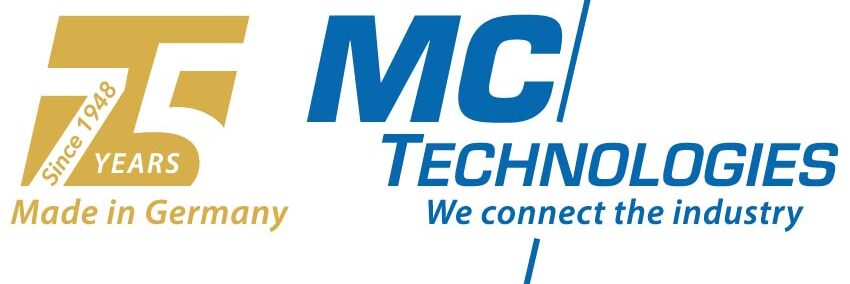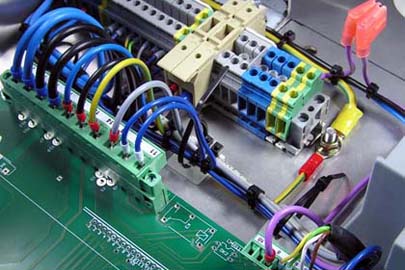Tips from the practice
You can trip over cables. But that is not what is meant when the following article deals with the challenges of developing and procuring assembled cables and assemblies. Instead, the article provides practical tips for selecting the “right” connection. He points out typical pitfalls and gives advice on how to avoid them.
A connecting cable for two assemblies of a robot, a compact light barrier distributor for closing devices or even a valve control for special vehicle construction: In all areas of industry as well as in the user sectors of automation technology, there are assembled cables that are sometimes combined with electronic assemblies to form compact system solutions. The spectrum ranges from a single cable with connector for a pressure sensor to cable harnesses of varying complexity to controllers and small controllers that are delivered ready for connection and complete with cables and connectors.
Neither the development nor the production of these components is one of the most complex tasks in automation technology. Nevertheless, typical mistakes can be made that are easy to avoid – saving time, money and a lot of hassle.
Experience from two different perspectives
MC Technologies GmbH in Hanover deals with such tasks on a daily basis and on a larger scale – in two completely different business areas. The here described Cable assembly has arisen from the distribution of Connectors leading manufacturers such as AMP/Tyco, binder, Conec, Lapp, Molex and Wago, with the corresponding technical know-how and cost-effective access to these key components, supplemented by the conception of the optimal assembly solution in each case together with the customer, its production, testing, customer-specific packaging and labeling, as well as lot-size-optimized delivery.
In another business area, MC Technologies has built up its own steadily growing range of modules, terminals and routers for machine-to-machine (M2M) data communication and is thus also regularly faced on the user side with the task of connecting the individual components of these overall solutions. In addition, the company is active as a specialist for measurement technology – as a partner of renowned manufacturers such as Fluke and Gossen Metrawatt.
From the user’s and the supplier’s perspective, this results in a comprehensive knowledge of the optimal design of line-based interfaces. This knowledge also includes the realization that users – regardless of whether they undertake cable assembly themselves or delegate it to external service providers – tend to make typical mistakes or overlook one or two details. A small overview shows what the designer or purchaser should consider in order to achieve the optimum result in this frequently recurring task.
Connectors: What about availability?
Care must be taken when selecting the cables as well as the connectors.
The range of fasteners, in particular, is very confusing. When making a decision, the user should not only consider the environmental conditions (protection class, current carrying capacity, corrosion resistance, installation space requirements, mobility or solvability, temperature resistance, …), but also check the (possibly worldwide) availability. Anyone who selects an “exotic” product must fear delays already in the development phase and also unreasonably high costs and/or delivery bottlenecks for series production.
Likewise, the question of the most suitable connection technique (crimping, soldering, screwing…) plays an important role here. Is vibration resistance required? Do special tensile loads occur? Is the environment dry and clean or damp and dirty? What quantities are to be processed – is the process to be designed accordingly for manual labor or for automatic machines?
What standards and regulations apply?
Depending on the area of application or target market, different and in some cases industry-specific guidelines and standards must be observed. This applies, for example, to machinery (Machinery Directive), to medical devices (Medical Devices Act), to elevators and escalators (Elevator Directive) or to applications in the railroad or automotive environment (corresponding railroad or automotive approvals) or in the military sector (MIL standards). It must also be checked whether country-specific regulations apply in the target market, such as the UL/CSA set of rules in the USA and Canada, which, for example, stipulates strict requirements for the selection of materials for plastic-sheathed cables for reasons of fire protection.
Logistics makes the difference
Especially for non-core components, the cable assembly manufacturer can save costs and time through intelligent logistics. This applies to the design phase (module reference and variant reduction as a development goal) of the assemblies and also to production. MC Technologies offers customers of the cable assembly division different models such as Kanban delivery, call-offs, delivery to various locations or to the place of installation, labeling and packaging according to customer standards.
Central question: “Make or buy”?
Among the key questions users ask themselves when deploying these types of assemblies is, “Make or buy?” The trend here is clearly toward outsourcing production and also logistical control and, sensibly, joint development with a specialized service provider. This decision is only logical, because for the service provider this task is a core competence, whereas for the equipment and plant manufacturer it usually is not.
“Do not underestimate the “economy of scale
A word about costs. Economies of scale play a major role in the procurement of electrical engineering and electronic components. As a distributor of connectors and an established service provider of cable assembly, MC Technologies purchases large quantities from the relevant manufacturers and can achieve correspondingly favorable prices. In this respect, from the customer’s point of view, it is often worth comparing prices with in-house production of these assemblies.
Made in China – or in Germany?
Since the procurement market is now international, the decision to outsource the assembly process directly raises the next question: Should the assembled cables be manufactured in Germany, in Eastern Europe or in the Far East? Corresponding offers, especially from the Far East, reach the purchasing department daily, and the market is confusing.
In answering this question, the number of units, target price and quality criteria must be taken into account, as well as security of supply and the question of how great the flexibility should be, for example, in the case of changes in ongoing series production.
MC Technologies can make customers a special offer here, combining high quality standards with favorable costs. Small to medium series are manufactured in Hanover. For large series, partner companies in Eastern Europe and Asia are called in, but they work to the same high quality standards as MC Technologies. In each case, the user has a contractual partner and contact person on site, i.e. in Germany, who assumes responsibility for delivery reliability and quality.
Conclusion: Using special know-how – right from the start
Cooperation with an external service provider of cable assembly or assembly production always brings the greatest benefit when it begins in the development phase and the service provider can thus influence the design of cable harnesses, interfaces and assemblies. In this case, his tasks include the preparation of circuit diagrams, PCB unbundling and the design or selection of mechanical and electrical components, as well as the proposal of optimal packaging, labeling and logistics concepts for smooth further processing.
In these cases – as numerous examples show – the technically and economically best solutions result from the customer’s point of view. This type of cooperation has been maintained by MC Technologies for many years with numerous companies in the fields of general mechanical engineering and automation technology, special vehicle construction and measuring equipment construction, as well as in medical and solar technology, among others.

